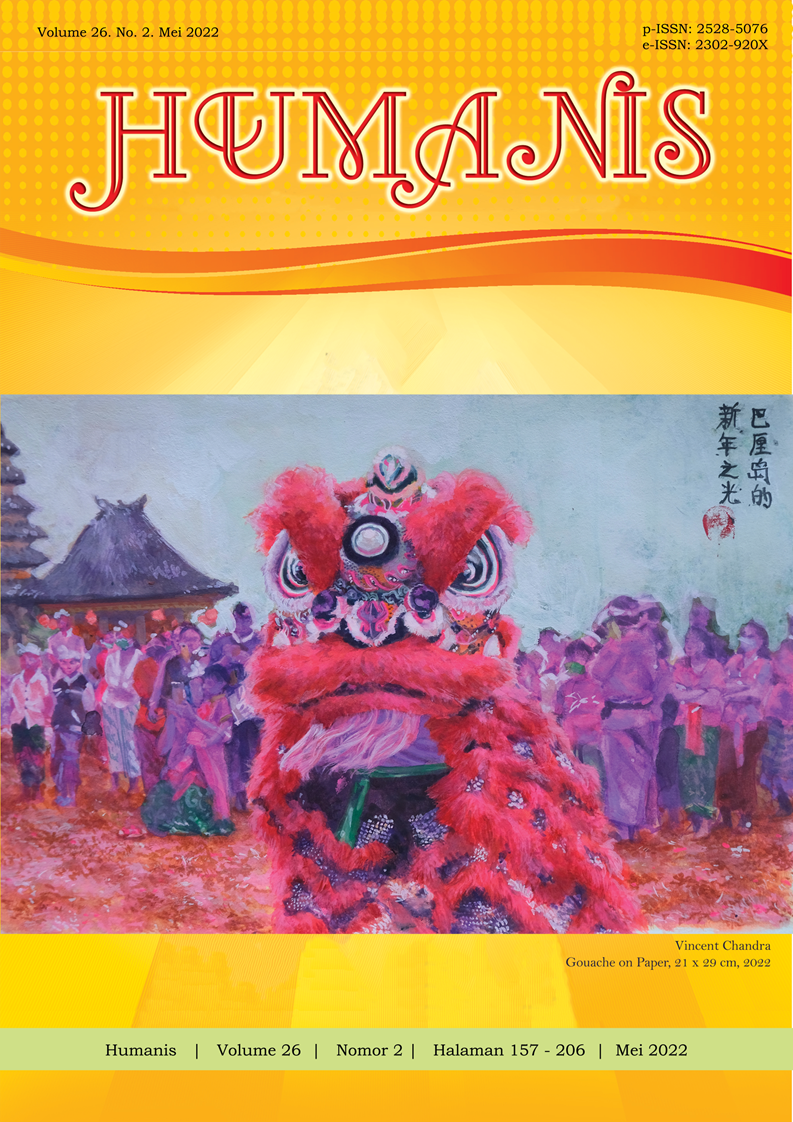A Critical Discourse Analysis of Sexual Harassment Against Women in Online Mass Media
Abstract
This study used Fairclough's critical discourse analysis theory to analyse the news articles published in Magdalene ??and Femina magazines in 2020. The authors particularly emphasised finding one of three aspects of Fairclough's socio-cultural practice: power. From this point, the authors attempted to find out the depiction of women and the stance of the contributors in the news articles about sexual harassment. This study found that the aspect of power constructed by contributors from news articles and magazines depicted women and men as vulnerable groups to sexual harassment. However, the harassment is described as still predominantly experienced by women. The findings also suggested that the contributors attempted to oppose male domination and power relations in the scope of work, especially in cyber sexual harassment.
Downloads
References
Quarterly, 40(1), 85–108. https://doi.org/10.1111/j.1533-8525.1999.tb02359.x
Chafai, H. (2017). Contextualising street sexual harassment in Morocco: a discriminatory sociocultural representation of women. Journal of North African Studies, 22(5), 821–840. https://doi.org/10.1080/13629387.2017.1364633
Dalton, E. (2019). A feminist critical discourse analysis of sexual harassment in the Japanese political and media worlds. Women’s Studies International Forum, 77(August), 102276. https://doi.org/10.1016/j.wsif.2019.102276
Durham, M. G. (2015). Scene of the crime: News discourse of rape in India and the geopolitics of sexual assault.
Feminist Media Studies, 15(2), 175–191. https://doi.org/10.1080/14680777.2014.930061
Fairclough, N. (1992). Discourse and Social Change. Polity Press. https://doi.org/10.2307/2074659
Haryadi, S. K. (2020). Survei: Pelecehan Seksual Pindah ke Dunia Maya Selama WFH. Magdalene. https://magdalene.co/story/survei-pelecehan-seksual-di-tempat-kerja-pindah-ke-dunia-maya-di-tengah-pandemi
Liswijayanti, F. (2020). Pelecehan Seksual Pekerja Marak Terjadi Saat WFH. Femina. https://www.femina.co.id/career/pelecehan-seksual-pekerja-marak-terjadi-saat-wfh
McDonald, P., & Charlesworth, S. (2013). Framing sexual harassment through media representations. Women’s Studies International Forum, 37, 95–103. https://doi.org/10.1016/j.wsif.2012.11.003
Nettleton, P. H. (2011). Domestic Violence in Men’s and Women’s Magazines: Women Are Guilty of Choosing the Wrong Men, Men Are Not Guilty of Hitting Women. Women’s Studies in Communication, 34(2), 139–160. https://doi.org/10.1080/07491409.2011.618240
North, L. (2016). Damaging and daunting: Female journalists’ experiences of sexual harassment in the newsroom. Feminist Media Studies, 16(3), 495–510. https://doi.org/10.1080/14680777.2015.1105275
Prendergast, M., & Quinn, F. (2020). Justice Reframed? A Comparative Critical Discourse Analysis of Twitter Campaigns and Print Media Discourse on Two High-Profile Sexual Assault Verdicts in Ireland and Spain. Journalism Practice, 0(0), 1–20. https://doi.org/10.1080/17512786.2020.1786436
Prusank, D. (2007). Masculinities in Teen Magazines: The Good, the Bad, and the Ugly. The Journal of Men’s Studies, 15(2), 160–177. https://doi.org/10.3149/jms.1502.160
Rodi-Risberg, M., & Höglund, M. B. (2018). From victims to survivors: The discourse of trauma in self-narratives of sexual violence in Cosmopolitan UK online. Discourse, Context and Media, 25, 114–121. https://doi.org/10.1016/j.dcm.2018.04.004
Van Dijk, T. A. (1993). Principles of critical discourse analysis. Discourse & Society, 4(2), 249–283. https://doi.org/10.1177/0957926593004002006
Zhang, J., Sun, C., & Hu, Y. (2022). Representing victims and victimizers: An analysis of #MeToo movement related reports. Women’s Studies International Forum, 90, 102553. https://doi.org/10.1016/j.wsif.2021.102553


















